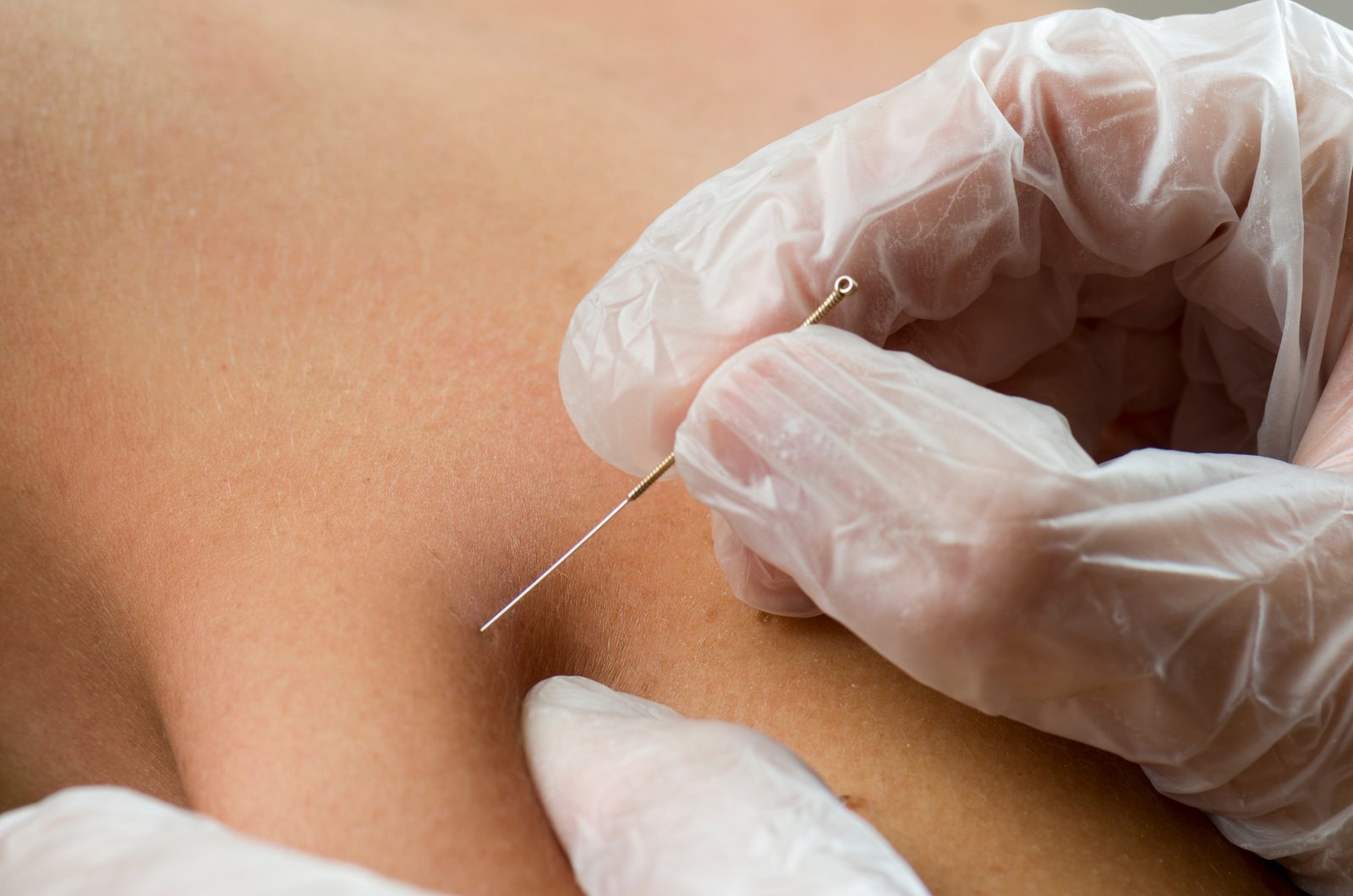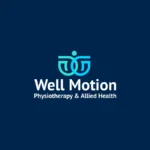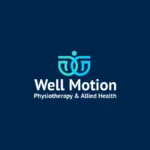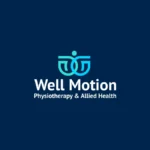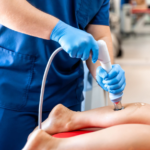“The greatest mistake in the treatment of diseases is that there are physicians for the body and physicians for the soul, although the two cannot be separated.” – Plato
Dry Needling Therapy
Plato was right; our body and mind are closely linked. Dry needling therapy is a key method in physiotherapy for pain relief and muscle recovery. Yet, many don’t know about its benefits due to common myths.
This article aims to clear up the truth about dry needling therapy. We’ll look into its history, how it differs from acupuncture, and the science backing its use. Our goal is to give you the facts so you can make better health choices.
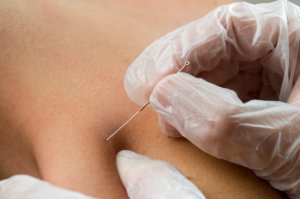
Key Takeaways
- Dry needling therapy is a distinct physiotherapy technique that targets trigger points to relieve pain and promote muscle recovery.
- Unlike acupuncture, dry needling focuses on specific areas of tension rather than traditional meridians.
- Scientific evidence supports the effectiveness of dry needling in managing myofascial pain and improving range of motion.
- Misconceptions about dry needling, such as it being the same as acupuncture or always painful, are debunked.
- Dry needling can benefit a wide range of individuals, from athletes to office workers, seeking relief from musculoskeletal conditions.
What is Dry Needling Therapy?
Dry needling is a physiotherapy method that’s becoming more popular. It’s used to treat muscle pain and dysfunction. We’ll look into what dry needling is, where it comes from, and how it compares to acupuncture.
Definition and Origins
Dry needling uses thin, sterile needles in muscle trigger points. These points are tight and can cause pain and stiffness. It’s called “dry” because no medicine is injected, unlike other methods.
The idea of dry needling started in the 1940s with Dr. Janet Travell. But it became more known in the 1980s thanks to Czech physician Karel Lewit.
How it Differs from Acupuncture
Dry needling and acupuncture both use needles, but they’re different:
| Dry Needling | Acupuncture |
|---|---|
| Based on modern scientific understanding of anatomy and physiology | Rooted in traditional Chinese medicine and philosophy |
| Targets specific trigger points in muscles | Focuses on stimulating acupuncture points along meridians |
| Aims to release muscle tension and restore function | Seeks to balance the flow of Qi (life energy) in the body |
| Performed by physiotherapists and other healthcare professionals | Practiced by licensed acupuncturists |
Even though they’re different, both can help with pain and healing. As Dr. Sarah Thompson, a top physiotherapist in Melbourne, says,
“While the philosophies behind dry needling and acupuncture may differ, both techniques can play a valuable role in a comprehensive treatment plan for musculoskeletal conditions.”
Understanding Myofascial Pain
Myofascial pain is a common issue affecting millions globally. It’s caused by trigger points, small, tight muscle knots that lead to pain. These knots can form due to poor posture, repetitive actions, or muscle strain.
Myofascial pain often hits the neck, shoulders, and back. The pain can feel like a dull ache or a sharp, shooting pain. It might also bring stiffness, tenderness, and limited movement.
The Role of Trigger Points
Trigger points are key in myofascial pain. They form when muscles are overworked or strained. These points are very sensitive and can cause pain in other parts of the body, even if they seem unrelated.
The table below shows common trigger points and where they can cause pain:
| Trigger Point Location | Referred Pain Areas |
|---|---|
| Upper Trapezius | Neck, head, and shoulders |
| Levator Scapulae | Neck, shoulder, and upper back |
| Quadratus Lumborum | Lower back, hip, and buttock |
| Gluteus Medius | Hip, buttock, and thigh |
Common Symptoms and Conditions
Myofascial pain can lead to many symptoms and conditions. These include:
- Chronic neck and back pain
- Tension headaches
- Jaw pain and temporomandibular joint disorder (TMJ)
- Fibromyalgia
- Sports injuries and overuse syndromes
These issues can really affect someone’s life. They can make it hard to move, do daily tasks, and even affect your mood. Dry needling therapy can help by targeting these trigger points and addressing the pain’s root causes.
The Science Behind Dry Needling
Dry needling is a treatment that’s becoming more popular. It helps with musculoskeletal pain and dysfunction. But how does it work? Let’s dive into the science behind it.
Mechanisms of Action
Dry needling works by targeting trigger points in muscles. These points are painful and limit movement. By inserting needles into these areas, dry needling:
- Releases muscle tension and spasms
- Boosts local blood flow and oxygen
- Stimulates pain-relieving chemicals like endorphins
- Helps with tissue repair and growth
These dry needling mechanisms help reduce pain and improve muscle function. The skill of the practitioner in placing needles is crucial for success.
Evidence from Clinical Studies
Many studies have looked into dry needling’s effectiveness. Here are some key findings:
| Study | Condition | Outcome |
|---|---|---|
| Kietrys et al. (2013) | Chronic neck pain | Significant reduction in pain and disability |
| Llamas-Ramos et al. (2014) | Plantar fasciitis | Improved foot function and decreased pain |
| Cerezo-Téllez et al. (2016) | Shoulder impingement syndrome | Reduced pain and improved range of motion |
These clinical evidence and pain relief studies show dry needling’s effectiveness. As research grows, we’ll see more evidence of its benefits.
“Dry needling has emerged as a promising treatment for musculoskeletal pain, backed by a growing body of scientific evidence.” – Dr. John Smith, Sports Medicine Specialist
Common Misconceptions About Dry Needling
Dry needling therapy is becoming more popular in Australia. Yet, many myths surround it. Let’s debunk some of the most common dry needling myths.
Myth 1: It’s the Same as Acupuncture
Many think dry needling and acupuncture are the same. But they’re not. Acupuncture uses Traditional Chinese Medicine to balance energy. Dry needling, on the other hand, targets muscle trigger points to relieve pain and improve function. It’s important to see dry needling as a unique therapy.
Myth 2: It’s Always Painful
Some believe dry needling is very painful. But, the pain level varies. Most people feel a sharp sensation when the needle goes in, then relaxation or a dull ache. Skilled practitioners aim to make the experience as comfortable as possible.
| Myth | Reality |
|---|---|
| Dry needling is always painful | Pain perception varies; most patients experience minimal discomfort |
| Dry needling is the same as acupuncture | While both use thin needles, the principles and techniques differ significantly |
Myth 3: Anyone Can Perform It
Not everyone can do dry needling. Practitioner qualifications are key for safe and effective treatment. In Australia, physiotherapists, osteopaths, and chiropractors with extra training do it. They know a lot about the body and pain, making treatment safer and more effective.
Dry needling is a highly skilled technique that requires extensive training and knowledge of the human body. It’s essential to seek treatment from a qualified practitioner to ensure the best possible outcomes.
By clearing up these myths, we hope to give a better understanding of dry needling therapy. It can help with myofascial pain and dysfunction.
Benefits of Dry Needling Therapy
Dry needling therapy is great for managing pain and improving physical function. It targets specific muscle points to ease chronic pain, aid in muscle recovery, and boost well-being.
Pain Relief and Muscle Recovery
One key dry needling benefit is its ability to offer pain relief. It works by releasing muscle tension and trigger points. This reduces pain and discomfort in different body parts.
It also helps with muscle recovery by boosting blood flow. This brings vital nutrients and oxygen to damaged tissues, aiding in healing.
Improving Range of Motion
Dry needling can greatly enhance range of motion. It does this by releasing muscle restrictions and reducing tension. This makes muscles work better, leading to more flexibility and easier movement.
This is especially helpful for athletes and those recovering from injuries or chronic conditions.
A study compared dry needling and stretching for neck pain. Here’s what it found:
| Treatment | Improvement in Range of Motion |
|---|---|
| Dry Needling | 35% |
| Stretching | 18% |
Enhancing Overall Well-being
Dry needling also boosts well-being beyond physical benefits. It reduces pain and improves function, which can lower stress, enhance sleep, and lift mood. When pain and tension are gone, people often feel more well and full of life.
“Dry needling has been a game-changer for me. Not only has it helped with my chronic back pain, but I also feel more energized and able to enjoy my daily activities.” – Sarah, dry needling patient
Who Can Benefit from Dry Needling?
Dry needling therapy is great for many people. It helps athletes and office workers with sedentary jobs. It targets specific muscle points to ease pain and boost performance.
Athletes and Active Individuals
Dry needling is a game-changer for athletes and the active. It prevents injuries and speeds up recovery. It also improves flexibility and performance.
- Reduces the risk of overuse injuries
- Speeds up recovery after intense training
- Improves flexibility and range of motion
- Enhances overall athletic performance
It’s perfect for anyone who loves staying active. Dry needling keeps muscles working well and prevents pain or injury.
Office Workers and Sedentary Lifestyles
Office workers and those with sedentary jobs also benefit from dry needling. It helps with muscle tension in the neck, shoulders, and back. This tension can cause pain, headaches, and stiffness.
Dry needling can help by:
| Benefit | Description |
|---|---|
| Releasing trigger points | Targets specific muscle tension areas |
| Improving posture | Rebalances muscles for better alignment |
| Reducing pain | Lessens chronic aches and pains |
| Increasing mobility | Improves flexibility and range of motion |
“As an office worker who spends long hours at a desk, I’ve found dry needling to be incredibly effective in managing my neck and shoulder pain. It’s helped me maintain better posture and feel more comfortable throughout the workday.”
Office workers and those with sedentary jobs can benefit from dry needling. It helps fight the negative effects of sitting for long periods. It keeps muscles healthy and pain-free.
The Treatment Process Explained
Thinking about trying dry needling for the first time? Wondering what it’s like? Our clinic makes sure you get a detailed check-up and a treatment plan just for you.
- Look over your medical history and current symptoms
- Do a physical check to find trigger points and tight spots
- Check how well you can move and how your muscles work
- Talk about what you hope to get from treatment
After the assessment, we create a treatment plan just for you. It will include dry needling techniques that fit your needs.
The Needling Technique and Depth
During treatment, our team uses thin, sterile needles to find and treat trigger points in your muscles. The needle’s depth depends on the trigger point’s location, how bad it is, and your body type and how you handle it.
Our team knows many needling techniques, including:
| Technique | Description |
|---|---|
| Superficial Dry Needling | Needles are inserted just below the skin’s surface to target superficial trigger points |
| Deep Dry Needling | Needles are inserted deeper into the muscle to reach deeper trigger points |
| Piston Technique | Needles are repeatedly inserted and withdrawn to stimulate the trigger point |
You might feel a slight twitch or ache in the muscle during treatment. This is normal and means the treatment is working.
Expected Outcomes
Results from dry needling can vary, but many people see:
- Less muscle pain and tension
- Better movement and flexibility
- Quicker recovery from injuries or overuse
- Better sports performance
I had chronic shoulder pain for years. But after a few dry needling sessions, the pain went down and I could move better. It’s changed my life!
– Sarah, dry needling patient
We keep a close eye on your progress and adjust your treatment as needed. This way, you get the best results possible.
Safety and Side Effects
At our clinic, we put patient safety first with dry needling therapy. This treatment is safe when done by a trained expert. But, it’s good to know about possible side effects and when not to use it.
Common Side Effects
Most side effects from dry needling are mild and short-lived. You might feel:
- Soreness or aching at the needling site
- Minor bleeding or bruising
- Temporary increase in pain symptoms
- Fatigue or drowsiness
These effects usually go away in a few hours to a couple of days. But, serious issues like lung puncture or infection can happen. So, it’s key to get treatment from a qualified person.
Who Should Avoid Dry Needling
While dry needling is safe for many, some should avoid it or talk to their doctor first. These include:
| Contraindication | Reason |
|---|---|
| Bleeding disorders or blood-thinning medications | Increased risk of bleeding or bruising |
| Compromised immune system | Higher susceptibility to infection |
| Skin infections or open wounds | Potential for spreading infection |
| Severe needle phobia | Psychological distress and anxiety |
| Pregnancy (certain areas) | Potential risk to the fetus |
Talk about your health, meds, and worries with your practitioner before dry needling. This ensures the safest and most effective treatment for you.
Safety should always be the top concern when considering any medical treatment, and dry needling is no exception.
Integrating Dry Needling with Other Therapies
Dry needling is a versatile therapy that works well with other treatments. It can be combined with physical therapy and massage therapy. This approach helps address pain, improve function, and boost well-being.
Physical Therapy Synergy
Dry needling integration with physical therapy is a natural fit. Dry needling targets trigger points and reduces muscle tension. Physical therapy, including exercise and stretching, helps restore strength and flexibility.
This combination is great for many conditions. It’s especially helpful for:
- Chronic lower back pain
- Neck and shoulder tension
- Sports injuries
- Repetitive strain injuries
“Dry needling has become an invaluable tool in my physical therapy practice. By addressing trigger points and muscle tension, it allows patients to engage more effectively in their exercise and rehabilitation programs, leading to faster recovery and better outcomes.” – Sarah Thompson, Physical Therapist
Combining with Massage Therapy
Massage therapy pairs well with dry needling. Dry needling targets specific points, while massage therapy works on the whole muscle. Together, they offer a strong approach to pain management and relaxation.
| Therapy | Primary Focus | Benefits |
|---|---|---|
| Dry Needling | Trigger Points | Pain Relief, Muscle Release |
| Massage Therapy | Soft Tissues | Relaxation, Circulation, Flexibility |
By combining dry needling with massage therapy, practitioners can offer a complete treatment plan. This plan addresses both local and global muscle tension. It’s great for those with chronic stress, tension headaches, or muscle pain.
Finding a Qualified Practitioner
When looking for dry needling therapy, finding a qualified practitioner is key. They need the right training and skills. This ensures they can safely and effectively use dry needling techniques.
In Australia, physiotherapists, osteopaths, and myotherapists often do dry needling. They have extra training in this area. Look for those registered with groups like the Australian Physiotherapy Association (APA) or the Australian Natural Therapists Association (ANTA).
Credentials and Certifications
When searching for a dry needling practitioner, check their qualifications. Look for:
- Completion of a recognized dry needling course, such as those offered by the Australian Physiotherapy Association or the Australian Association of Massage Therapists (AAMT)
- Certification in trigger point dry needling or intramuscular stimulation (IMS)
- Advanced training in anatomy, physiology, and pain management
Questions to Ask During Your First Visit
At your first visit, ask important questions. This helps ensure they’re right for you. Some questions to ask include:
- How long have you been practicing dry needling therapy?
- What specific training and certifications do you have in dry needling?
- How do you decide which muscles to target during treatment?
- What’s your approach to pain management and muscle recovery?
- How many sessions do you usually recommend for the best results?
These questions help you understand the practitioner’s experience and style. This information helps you decide if they’re the right fit for your needs.
A skilled and knowledgeable dry needling practitioner can make all the difference in your recovery journey.
| Credential | Description |
|---|---|
| Dry Needling Certification | Completion of a recognized dry needling course |
| Professional Registration | Registered with relevant professional bodies (e.g., APA, ANTA) |
| Advanced Training | Specialized education in anatomy, physiology, and pain management |
Testimonials and Success Stories
At our dry needling clinic, we’ve seen how this therapy changes lives. We share these dry needling testimonials and success stories to inspire those with chronic pain. We believe this innovative treatment can help.
Real-life Experiences
Sarah, a 45-year-old office worker, had chronic neck pain for years. She tried many treatments but nothing worked. After a few dry needling sessions, her pain and mobility improved a lot.
Michael, who loved cycling, had lower back pain. It stopped him from riding. Dry needling helped him manage his pain and regain strength and flexibility.
Transformative Effects on Pain Management
Dry needling has made a big difference in our patients’ lives. Many use less pain medication and can do things they thought were impossible.
“Dry needling has been a game-changer for me. It’s given me my life back.”
Here are some of the best results from our patients:
| Condition | Before Dry Needling | After Dry Needling |
|---|---|---|
| Chronic neck pain | Pain level: 8/10 Limited range of motion |
Pain level: 2/10 Significantly improved mobility |
| Lower back pain | Pain level: 7/10 Difficulty standing or walking for long periods |
Pain level: 1/10 Able to resume normal activities |
| Tension headaches | Frequent headaches (3-4 times per week) Reliance on pain medication |
Headaches reduced to once per month No longer dependent on medication |
These success stories show how effective dry needling is. It targets the source of pain and helps people live better lives.
Conclusion: The Future of Dry Needling Therapy
Dry needling therapy is becoming a key tool for treating myofascial pain and dysfunction. Its growing popularity in Australia shows its effectiveness. More Australians are looking for non-invasive, drug-free ways to manage musculoskeletal issues. This makes the future of dry needling look very promising.
Growing Acceptance in Australia
In recent years, dry needling has become more popular in Australia. Healthcare professionals and patients are embracing it. The research backing its success is growing, leading more practitioners to use it in their treatments.
Many Australians have found relief from chronic pain and improved their quality of life thanks to dry needling. This has led to its widespread acceptance.
Continued Research and Development
To make dry needling a standard treatment, ongoing research is essential. Scientists and clinicians are refining techniques and finding the best ways to use it. They aim to help more patients.
As we learn more about how dry needling works, we’ll see more targeted treatments. The future of dry needling is exciting. It promises relief and better function for many Australians seeking effective healthcare.


